Shah Nematollah Vali Shrine: A Must-Visit Site in Kerman
Shah Nematollah Vali was the founder of the Nematollahi order in Sufism, leaving behind a significant body of work. His final resting place is in Mahan, Kerman, where he was buried after his death in 1431.
Today, the Shah Nematollah Vali Shrine stands as one of the most important cultural sites in Kerman province.
Originally dating back to the Safavid era, the shrine has undergone various expansions over time, showcasing architectural styles from different periods. The current complex spans 35,000 square meters, housing not only the mausoleum but also a museum with a rich collection of artifacts.
In this blog, we’ll cover everything you need to know about the Shah Nematollah Vali Shrine, including its history, location, architecture, and insights into the life of Shah Nematollah Vali.
Who is Shah Nematollah Vali?
Early Life and Background
Seyyed Nooruddin Nematollah Kermani, known as Shah Nematollah Vali, was born on Wednesday, the 14th of Rabi' al-Awwal in 731 AH (approximately 1330 AD) in Aleppo, a city in northern Syria.
His father, Mir Abdullah Vali, was a prominent Arab figure and a descendant of the Prophet Muhammad (PBUH) through nineteen generations. His mother was of Iranian origin. From a young age, Shah Nematollah exhibited a keen interest in Sufism, often accompanying his father to Sufi gatherings.
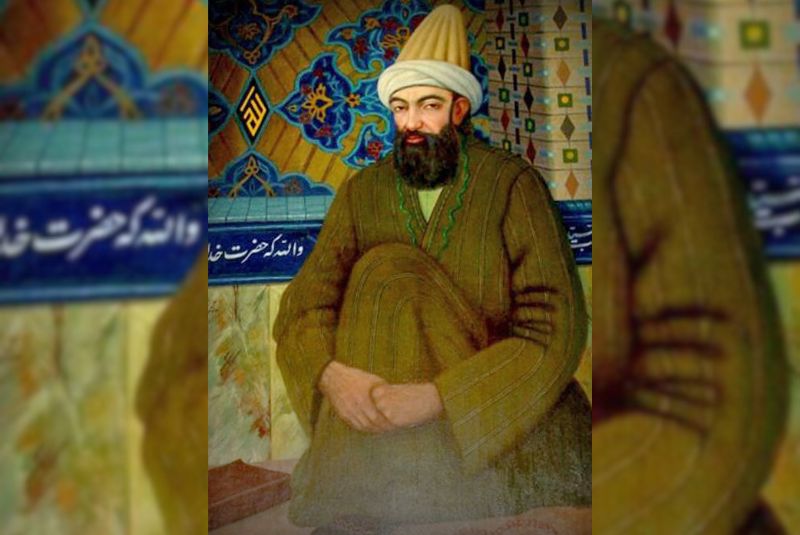
Spiritual Development
During his youth, he was greatly influenced by the teachings of Muhyiddin Ibn Arabi, one of the most esteemed Sufi mystics. The presence of Ibn Arabi in Aleppo provided Shah Nematollah with a unique opportunity to study under him.
After years of learning and spiritual refinement, he traveled to Shiraz, which was a major center of Sunni jurisprudence at the time. In Shiraz, he benefited from the teachings of renowned scholars, including Qazi Ozaldin Iji, a distinguished teacher of Islamic jurisprudence.
After completing his studies, Shah Nematollah sought a spiritual guide. At the age of 24, during his pilgrimage to Mecca, he encountered Sheikh Abdullah Yafai, known as Afif al-Din, who was a prominent Sufi figure of his time.
Shah Nematollah became a disciple of Sheikh Afif al-Din and spent seven years under his guidance. His travels eventually led him to Herat, where he married the granddaughter of Amir Hussein Heravi.
Final Years and Death
Shah Nematollah's last destination was Kerman, Iran. He settled in a place called Kohbanan, where he dedicated his life to spiritual practice and teaching. In Kohbanan, he established a gathering place for Sufis, known as Takht Amir, where he would share his wisdom and guidance.
He lived for over a century, passing away in 832 AH (approximately 1429 AD) in Mahan, Kerman. His close associate, Shams al-Din Ibrahim Bami, conducted his funeral prayer, and he was buried in a garden that later became the site of the Shah Nematollah Vali Shrine.
Contributions to Sufism
Shah Nematollah Vali is regarded as a pivotal figure in Sufism, having established the Nematollahi order. His teachings emphasized community engagement and service to humanity, contrasting with the ascetic tendencies of many Sufi paths.
He believed that inner purification could be achieved through social involvement and hard work. Shah Nematollah was known for his agricultural pursuits, which he used to support himself and his followers.
One of his favored places for spiritual retreat was the shrine of Imam Hussein (PBUH) in Karbala, where he observed a forty-day spiritual seclusion. During this time, he engaged in prayer at night and fasted during the day.
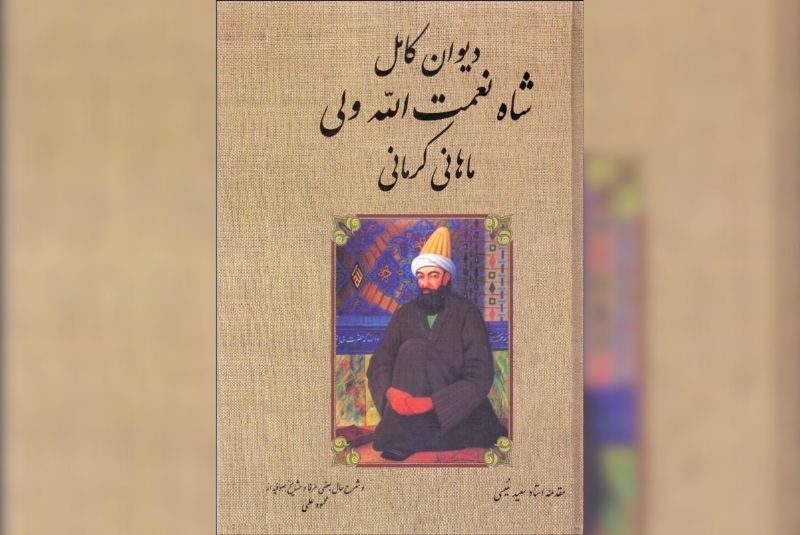
Literary Works
Shah Nematollah Vali's literary contributions are significant, with his most notable work being a poetic collection containing approximately 15,000 verses, including odes, ghazals, and couplets.
He also authored several prose works, including commentaries on the mystical book "Lama'at" by Fakhr al-Din Ibrahim Iraqi. His writings, such as "Risalah" and "Sharh Ikhlas," reflect deep spiritual insights and remain influential in Sufi literature.
History of Shah Nematollah Vali Shrine
The Shah Nematollah Vali Shrine, encompassing approximately 35,000 square meters, is a historical complex dating back to the Safavid era. The original structure was a square chamber topped with a dome, constructed in 840 AH (1436 AD) under the orders of Ahmad Shah Bahmani, a ruler from the Deccan region of India.
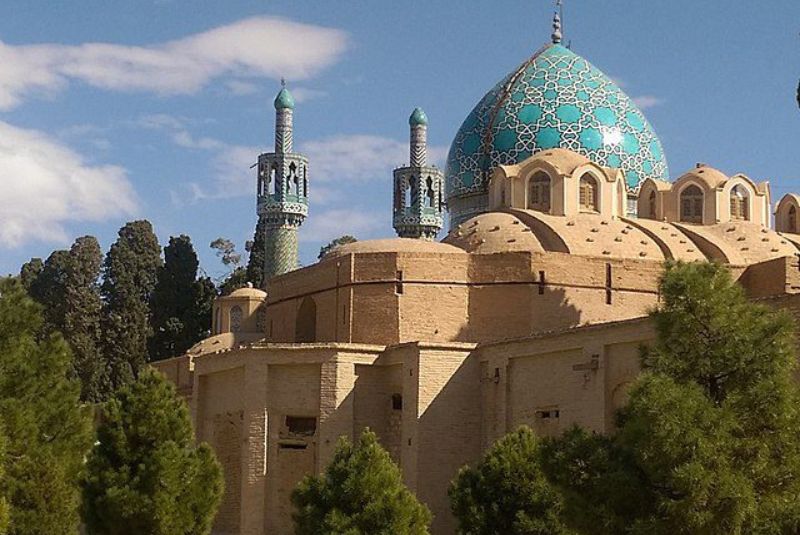
The Bahmani dynasty ruled southern India for around 180 years, from 748 AH to 933 AH, and had a profound appreciation for Persian culture and literature. They made significant efforts to bring prominent Persian poets like Hafez Shirazi and Shah Nematollah Vali to their court, although these attempts were unsuccessful. Ahmad Shah Bahmani was a devoted follower of Shah Nematollah Vali, and the mausoleum was built at his behest and expense.
Over time, additional sections were added to the original chamber, primarily during the reigns of Shah Abbas and Nasser al-Din Shah Qajar, with most of the expansion occurring in the Qajar period.
On January 5, 1931, the shrine was registered as a national heritage site in Iran. In 1981, part of the upper dome was damaged due to an earthquake, but the complex was later restored by the Cultural Heritage, Handicrafts, and Tourism Organization.
Architecture of Shah Nematollah Vali Shrine
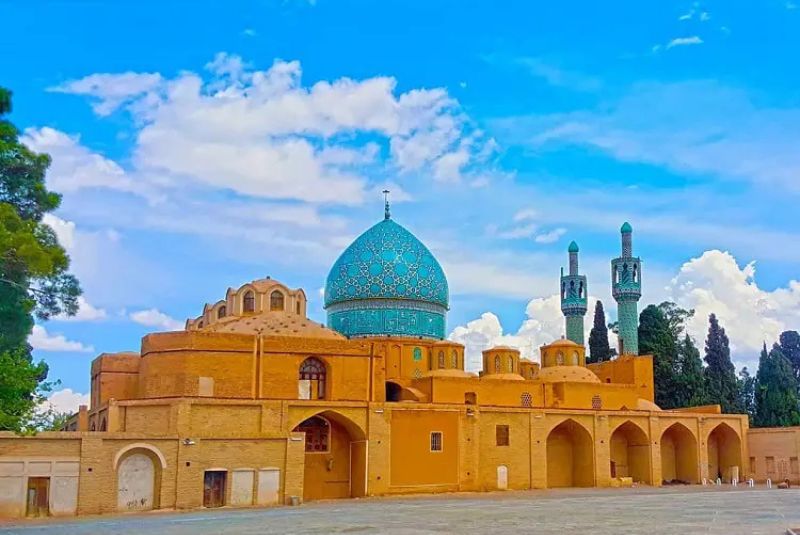
The Shah Nematollah Vali Shrine features three open courtyards, covering an impressive area of 32,000 square meters. The shrine itself, along with its surrounding courtyards and porticos, spans about 6,000 square meters and presents a stunning aesthetic.
The complex includes two entrance gates, small and large chambers, four beautifully tiled minarets, and two significant porticos named after key figures: the Director of the State and Shah Abbas. Additionally, there are four courtyards named Atabaki, Vakil al-Mulk, Mirdamad, and Hosseiniyeh.
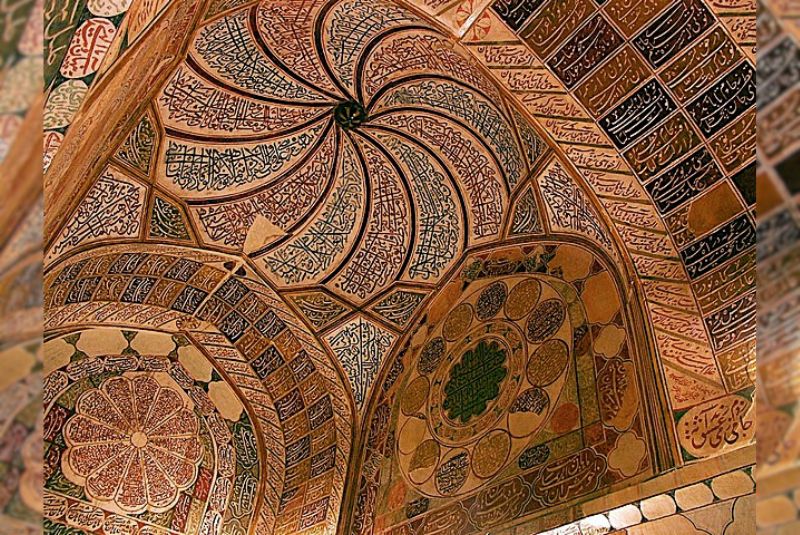
A fascinating aspect of the shrine's architecture is the use of the number 11, discovered by Dutch mathematician Vincent Karels. His studies revealed that the turquoise dome is divided into 11 equal sections, a remarkable feat considering that circular perimeters are typically divided into even parts. This choice of 11 may symbolize the name of God, suggesting a profound connection to the faith and purity of Shah Nematollah Vali.
Different Sections of Shah Nematollah Vali Shrine
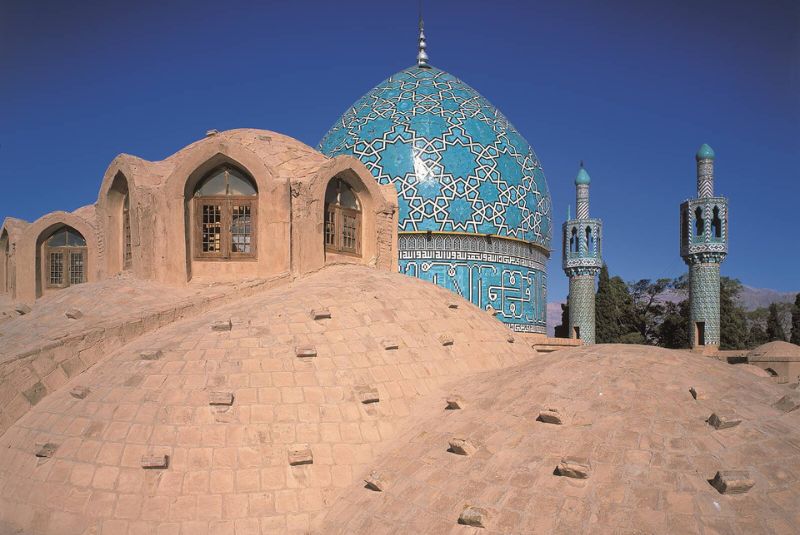
The Shah Nematollah Vali Shrine, located in the city of Mahan in Kerman Province, Iran, is a historical site that reflects the rich tapestry of Iranian Islamic architecture.
The shrine consists of various architectural components that span from the post-Timurid period to the Qajar era. Each section possesses unique features, making the shrine a vital representation of Persian architectural styles and cultural heritage.
The Tomb of Shah Nimatullah Vali
The central structure of the shrine is the tomb of Shah Nimatullah Vali, characterized by its domed chamber adorned with intricate paintings on plaster. The dome's decorations are enhanced with colorful tile work in lapis lazuli and turquoise hues, while the exterior is embellished with white and gold arabesque motifs.
The western entrance features a tile mosaic that combines lapis lazuli, turquoise, white, and gold colors. A donation box, inscribed with poetry praising the Ahl al-Bayt, sits at the entrance, where visitors can contribute their offerings.
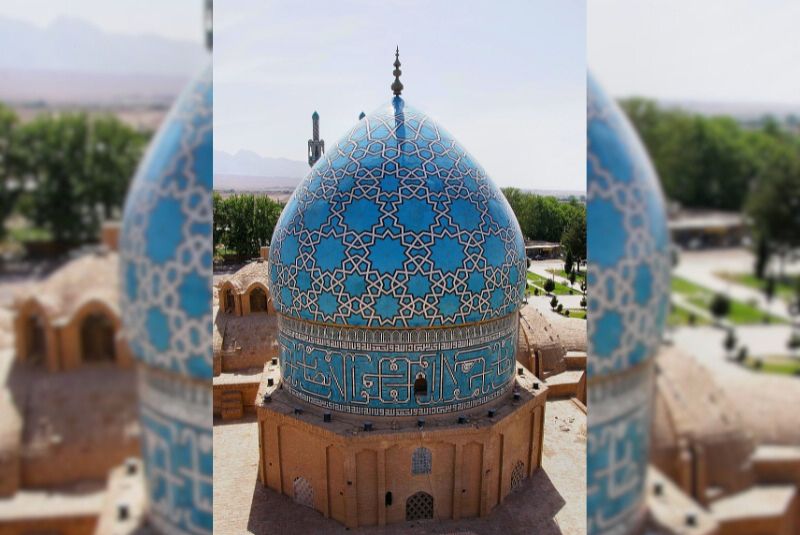
The doors of the tomb showcase geometric designs in marquetry and are embellished with pieces of ivory. The dome's surface is crafted with black and white tiles, creating a star pattern against a light-colored glaze.
A notable feature of the tomb is the marble gravestone, intricately inscribed with the names of the Twelve Imams and verses from the Quran, showcasing beautiful calligraphy.
The decorative elements of this section predominantly originate from the Safavid and Timurid eras, with notable inscriptions and verses adorning the walls beneath the windows.
Chilla Khaneh
To the southwest of the tomb lies the Chilla Khaneh, a small space that dates back to before the Safavid era. This area served as a retreat for Shah Nematollah Vali, where it is said he engaged in spiritual practices for forty days and nights, subsisting on a single almond each day.
The decorations in the Chilla Khaneh reflect the post-Timurid era, with its low ceiling resembling a Sufi hat and featuring twelve ribs. The walls are adorned with verses and sayings that highlight the significance of Imam Ali and other Imams, along with praises for Shah Nematollah Vali and the city of Mahan.
Vakil al-Mulk Courtyard
The Vakil al-Mulk Courtyard is a notable feature associated with Mohammad Ismail Khan Nuri, a prominent figure during the Qajar period and the governor of Kerman.
This courtyard, also known as Mahdiyeh, connects to the Gonbad Khaneh and Shah Abbas portico. A cross-shaped pool is situated in this courtyard, surrounded by towering cypress and pine trees, creating a serene atmosphere.
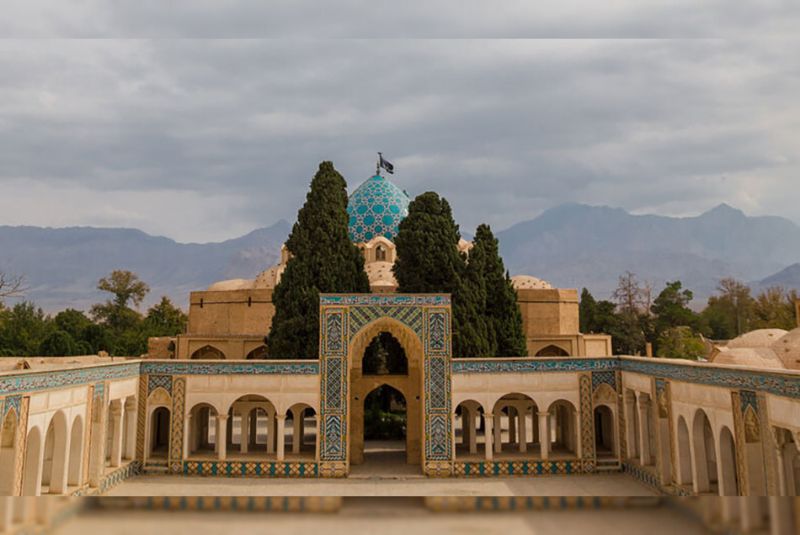
Shah Abbas Portico
The Shah Abbas Portico, also known as Dar al-Hifz, dates back to the reign of Shah Abbas, around 998 AH. Its most striking feature is the beautiful entrance, crafted from steel, prominently displaying the names of the Twelve Imams in relief.
In the southeastern section of the portico, two tombstones are located: one belonging to Aghakhatun, the wife of Khalil Beg Afshar, and the other to Beik Tash, the son of Vali Khan. The portico's entrance doors lead directly to the tomb and the Mir Damad Courtyard.
Mir Damad Courtyard
Similar in architectural style to the tomb, the Mir Damad Courtyard was constructed during the Safavid era and underwent restoration during the reign of Naser al-Din Shah. At its center is a marble pool named Kausar.
The Shah Abbas portico can be viewed to the east of the courtyard. The patron of the Mir Damad Courtyard was Bektash Khan, a governor during the Safavid period in Baghdad.
Atabaki Courtyard
Constructed by Ali-Asghar Khan Atabaki, the prime minister during the reign of Naser al-Din Shah, the Atabaki Courtyard features porticos surrounding a central pool. This area serves as a tranquil spot for reflection and appreciation of the shrine's beauty.
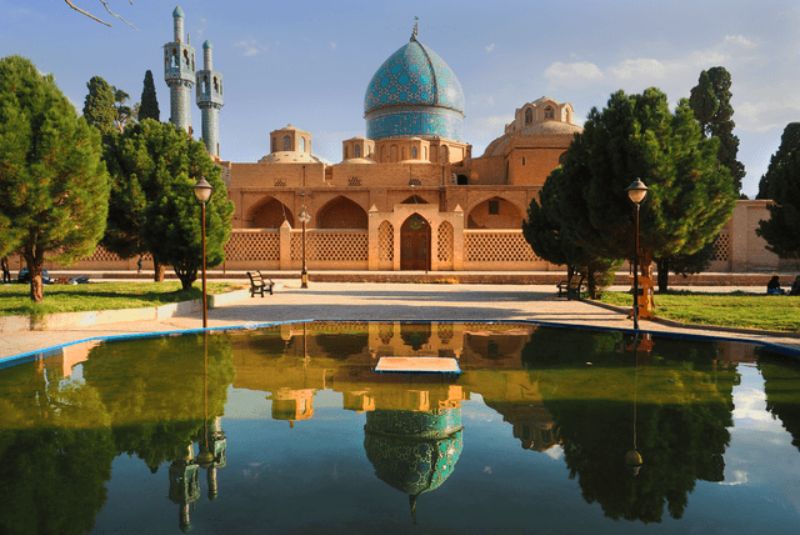
Hosseiniyeh Courtyard
The Hosseiniyeh Courtyard is distinguished by its two towering minarets, each 42 meters high, constructed during the era of Mohammad Shah Qajar. Alongside the brick minarets, a beautifully crafted entrance enhances the courtyard's visual appeal, drawing visitors' attention.
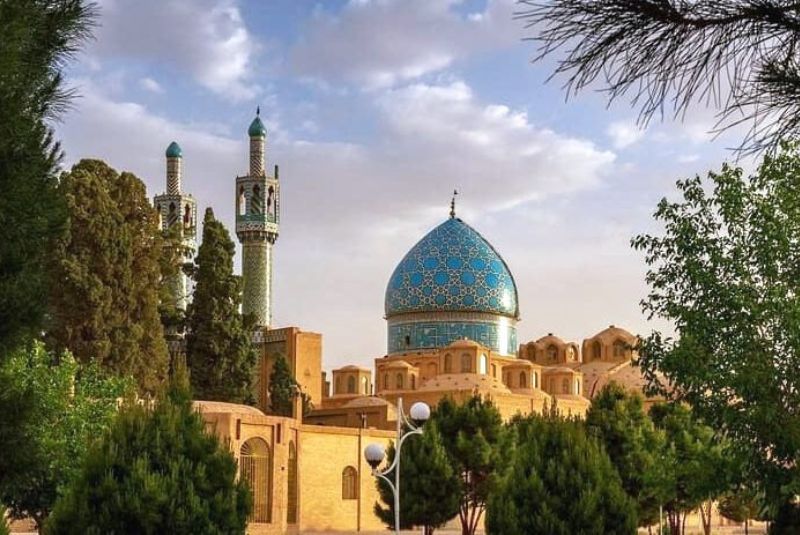
Caravanserai
Another noteworthy aspect of the shrine complex is the caravanserai, a partially ruined structure that has undergone restoration efforts. This caravanserai dates back to the Qajar period and is located near the western side of the shrine.
Shah Nematollah Vali Museum
One of the significant sections of the shrine complex is the Shah Nematollah Vali Museum and bookshop. Located at the northern end of the entrance corridor, the museum houses valuable artifacts predominantly related to Sufi culture. Some notable items in the museum include:
- Decorative Alms Bowls: These small vessels are significant symbols for dervishes, traditionally carried by them on a chain over their shoulders.
- Carved Hatchets: Small hatchets carried by dervishes, often used for symbolic purposes.
- Embroidered Shawls: Among the most exquisite pieces, these were historically used to cover the grave of Shah Nematollah Vali.
- Other items in the museum include ornate swords with leather covers, shields made from rhinoceros skin and steel, ancient books, ceramics, and glassware.
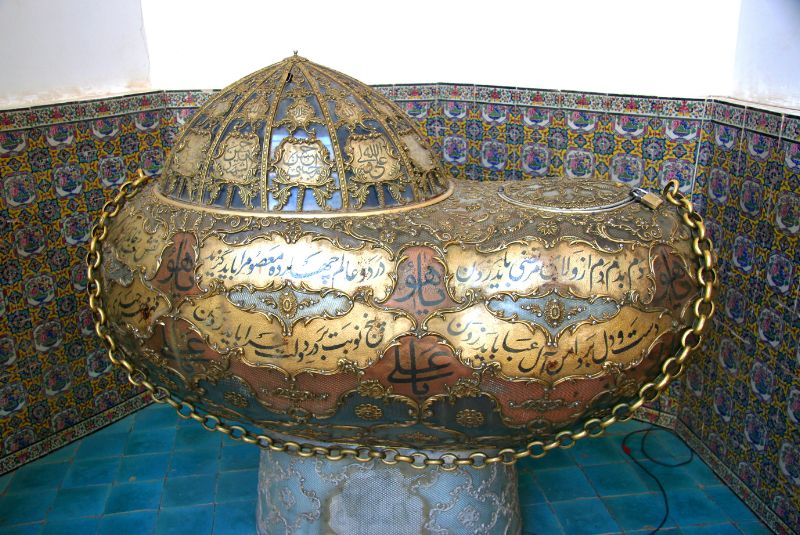
Amir-Nizam Guroosi Tomb
Situated to the southwest of the entrance corridor is the Amir-Nizam Guroosi Tomb, dedicated to a notable figure from the Qajar period known for his political influence and artistic talent, especially in calligraphy.
He served as the governor of Kerman and Baluchestan towards the end of his life. Upon his death in Ramadan 1317 AH, he was buried in a tomb he commissioned within the Shah Nematollah Vali Shrine complex.
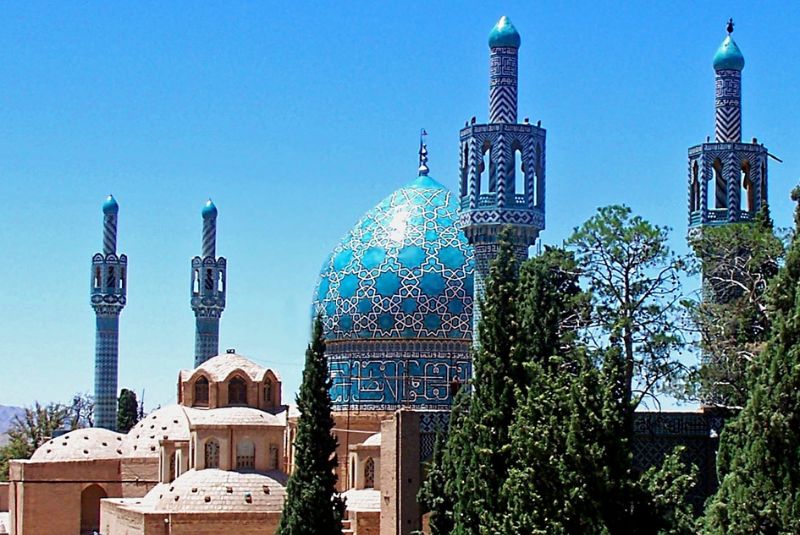
Shah Nematollah Vali Shrine Location and Access
The Shah Nematollah Vali Shrine is located in the picturesque city of Mahan, approximately 35 kilometers southeast of Kerman. Nestled at the foot of the Jopar and Polvar mountains, Mahan is renowned for its historical attractions and pleasant climate, making it a key tourist destination in Kerman Province.
How to Get There
To reach the shrine, take the Kerman-Bam Freeway to Mahan. Upon entering the city, head towards Basij Square. Continuing straight, you will arrive at Ghorni Square. Turn onto Imam Khomeini Street, which leads directly to Imam Khomeini Square.
From there, take a right onto ValiAsr Street, where the shrine is situated at the beginning of the road. If you miss the city entrance, continue along the Kerman-Bam Freeway until you reach Jihad Street, which connects directly to Imam Khomeini Square.
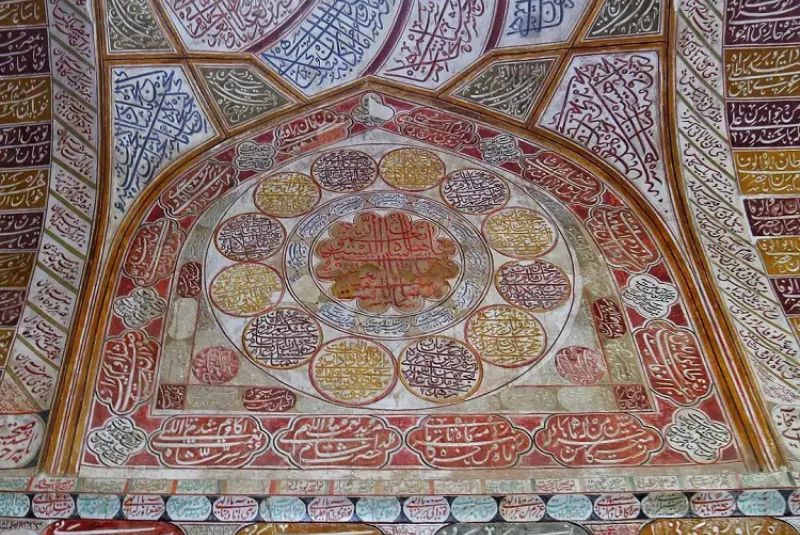
Tips for Visiting Shah Nematollah Vali Shrine
- The shrine is open for visits from 9 AM to 11 PM.
- Entry to the complex is free for Iranian visitors, but a fee of 2,000 tomans is required to visit the museum.
- For foreign visitors, the entrance fee is 20,000 tomans, while museum entry is free.
- The museum doors are usually closed, so if you want to visit, you should request access from the shrine staff.
- Dress appropriately while visiting Shah Nematollah Vali Shrine.
- Always respect the local culture during your travels in the area.
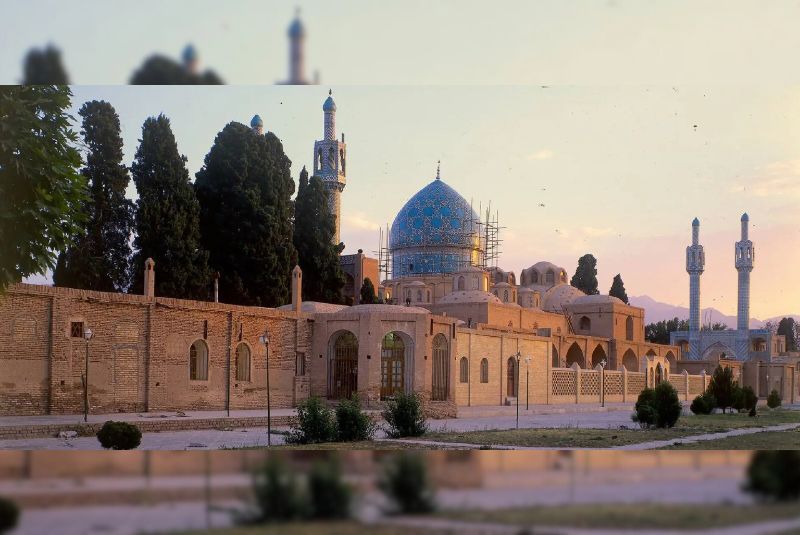
Bottom Line
The Shah Nematollah Vali Shrine, located in Mahan, Kerman, is a vital cultural landmark dedicated to the influential Sufi figure, Shah Nematollah Vali. Founded in the 15th century, the shrine features exquisite architecture that reflects various historical styles and spans a vast complex of 35,000 square meters. Visitors can explore the beautiful Tomb of Shah Nimatullah Vali, serene courtyards, and the museum showcasing Sufi artifacts.
Share your story!
Comment below and let us know about your Experience.
Your story inspires others!


Comment
Leave a Comment